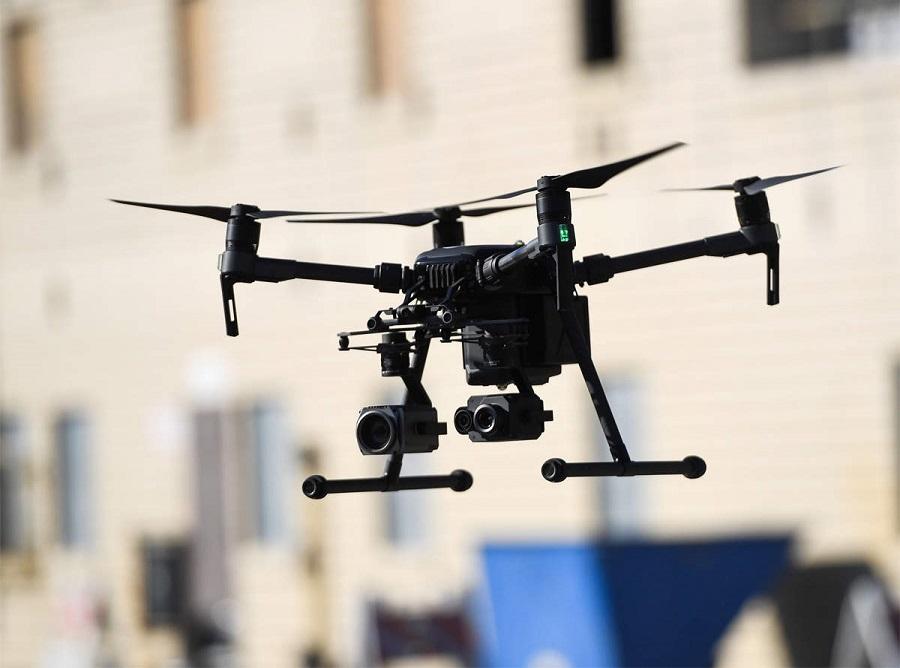New regulations for drones industry have arrived and In more than 90-95% of India, smaller drones could fly without lengthy regulatory approval and licenses.

Recent drone regulations released by the Directorate General of Civil Aviation (DGCA) in India have ignited the interest of start-ups and investors in the industry. Starting off, even large drones (500kg max weight) would not require permission to fly up to 400ft in “green zones”. Over 300 green zones have already been designated by the government, and it is estimated that over 80% of Indian landmass will come under these. Moreover, no specific permission is necessary in green zones even for long-range flight, night operations, various payloads, delivery, spraying, etc.
On the other hand, yellow zones, near sensitive installations and airports, would be the next step. The minimum automated online permissions for flying up to 200 feet would be required here, along with keeping a distance of at least 12 kilometers from sensitive installations. It would mean, in almost all of India, small drones could fly without lengthy regulatory approval or license. The only requirement is that the drone has compliance certification issued by the DGCA or the government.
Additionally, six months would be provided for safety compliances like NPNT (No Permission No Takeoff) and geofencing. Furthermore, nano drones (under 250g) and defence drones would be exempt from even these regulations. Yellow and red zones would require an online approval process, and drones weighing over 2 kg would require a government-trained pilot. However, the total number of forms has been reduced from 25 to 5. Additionally, the DGCA may grant exemptions from even these provisions on a case-by-case basis.
In addition, drone trials have begun for beyond line-of-sight operations in which drones will be able to cover hundreds of kilometers autonomously. This would facilitate ecommerce, food delivery, fast commerce, drone taxis, and emergency deliveries. The drone software companies will also benefit greatly, as they will provide the platform for this growth.
In terms of Omnipresent Robot Tech, we have already met all clearances and compliances. These include the DGCA’s NPNT certification, pilot certification, 5-year MHA clearance, and clearance for tests beyond visual line of sight by the DGCA. Moreover, we developed a drone nerve center which allows autonomous monitoring and control of hundreds of drones and includes AI-based algorithms such as obstacle avoidance, object detection, tracking and counting, drone chasing, etc. It also allows for the addition of new behaviors based on the data collected through training.
Our drone autopilot software also includes a unique engine failsafe feature, which allows the drone to operate safely even if its engine fails. Our autopilot software offers seven levels of failsafe, which we feel are crucial when using drones in a large environment. Also, our performance has been vetted by the Survey of India (SoI). Recently, Omnipresent was among the top 3 companies in a SoI tender that required absolute precision down to the centimetre among 14 companies that bid.
Our deployments in India have exceeded 100. Our drone nerve centre is used by top oil refineries, power plants, cement plants, metal plants, e-commerce giants, and security firms. Furthermore, we have agreements with half a dozen state governments to provide drone solutions.
Our drones can carry up to 15 kg of payload, fly for up to 2 hours and cover up to 100 km. However, with the new regulations, we are also looking at building software/hardware to support larger drones, such as drone taxis and drone couriers. In the next 2-3 years, the main differentiation for drones will be software as hardware stabilizes. We have therefore invested a lot of effort in developing a drone nerve center that can support virtually any drone, provided we have an API that exchanges data and signals with the drone. Our software has even been used by Chandrayaan 2 rovers for perception and navigation.
With the new regulations in place, some sectors will see exponential growth. There will be 2-3 unicorns in the drone delivery space, doing millions of daily deliveries and enabling rapid commerce. Deliveries will probably be handled at an apartment complex’s fulfillment center or guard room instead of individual houses. In B2B operations, drones up to 500 kg could replace small trucks.
The next big sector will be mapping. Private companies were recently allowed to do mapping under the government’s guidance. We will see drones map every nook and corner of India at a centimetre-level resolution. As seen in the SoI Swamitva scheme, where it plans to map all six lakh villages in India. Drone-based agriculture will be the next big thing.
Drones will be used to detect crop problems in advance and to spray with precision. About 50% of India’s landmass will require this activity on a year-round basis. The drones will be a big boon for farmers, because they have been shown to boost productivity by 20-25%. It will also create lakhs of jobs locally for drone pilots and technicians. Another sector which is already booming would be drone-based industrial assets’ inspection.
In particular, this is useful for tall structures such as cellphone towers, power lines, chimneys, flares, cooling towers, etc. There are over a million cellphone towers in India alone. It is risky, unreliable and expensive to ask someone to climb one of these structures for inspection. In the near future, monitoring of construction projects will become a priority; be it buildings, highways, or railways. The data will be useful in assessing projects, insurance claims and repairs, etc.
NHAI has already announced that all road projects will require drone data collection and assessment. A new sector that will emerge in the next few years is drone-based taxis, with green zones allowing drones up to 500 kilograms. Within a city, these taxis would be able to transport 1-2 passengers within a range of 50-100km in a matter of minutes, significantly reducing traffic. Landing and taking off will be much easier than with traditional helicopters. Also, because they are battery-powered, they will have much lower operating and maintenance costs.
Praveen Sinha, founder and former managing director of Jabong.com, said on the development, “We had worked with Omnipresent back in 2015 and successfully demonstrated drone-based deliveries. However, at that time, regulations were not favourable for a scale-up. Now, with new regulations in place, it has become quite attractive for big ecommerce players like Flipkart, Zomato, Swiggy and Amazon to start large-scale drone-based deliveries. Also, medicine and emergency delivery from companies like Pharmeasy, NetMeds and 1mg will also become favourable via drones.
(The author of this article Aakash Sinha, is the CEO of Omnipresent Robot Technologies Pvt Ltd, an industrial drone AI solutions provider)









